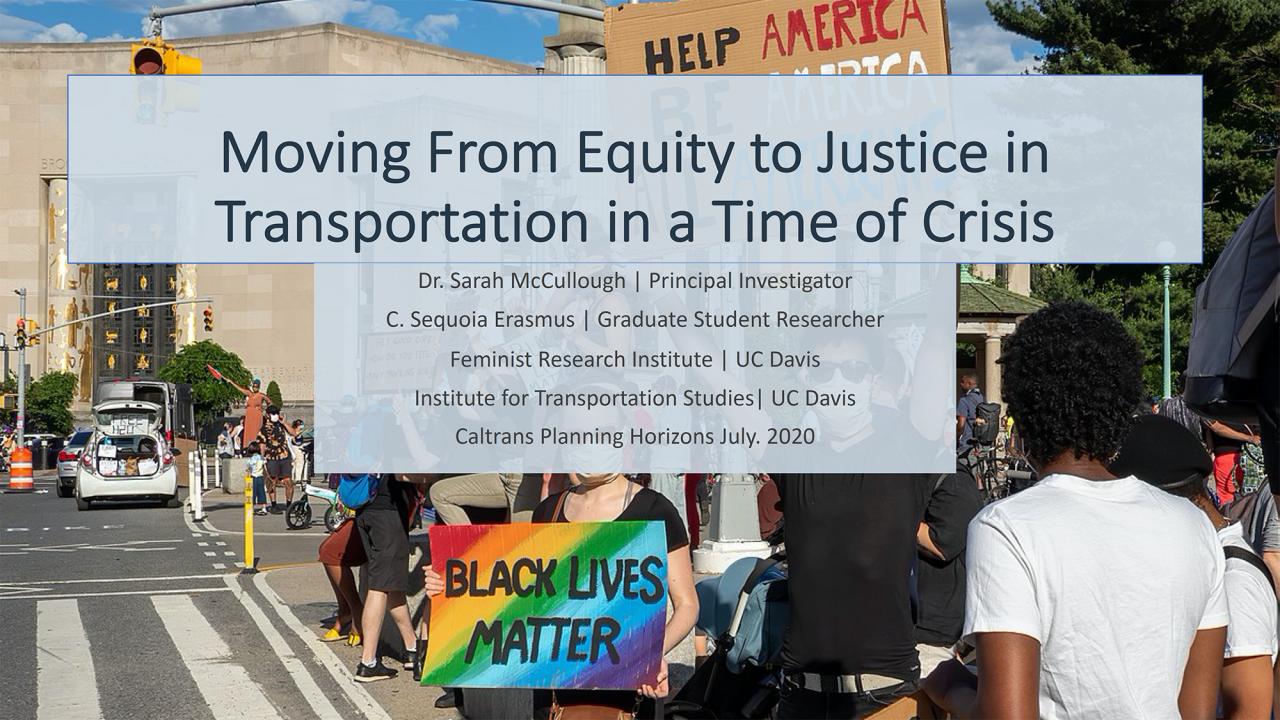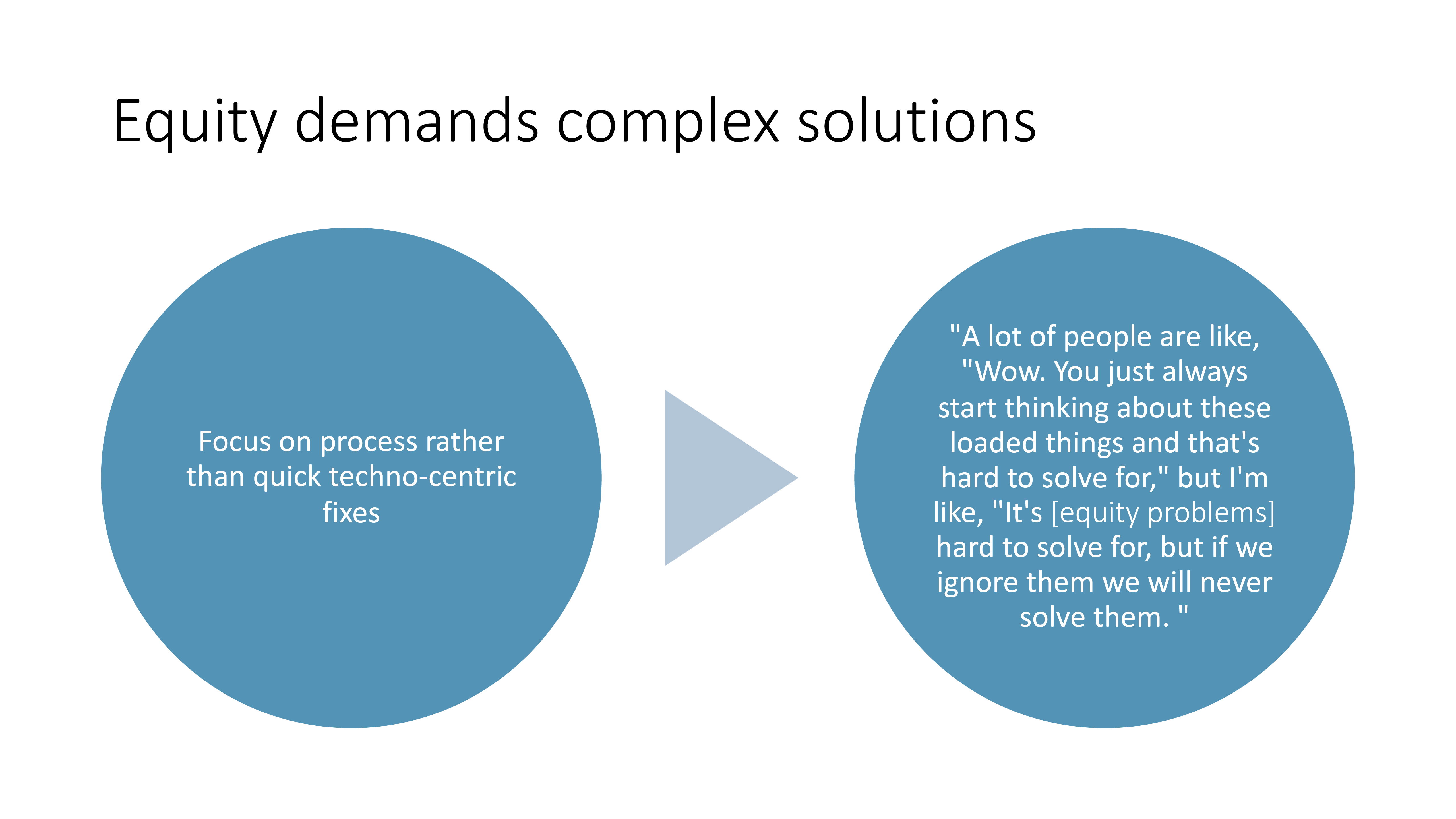
Preliminary Results of Research on Equity and Diversity in Transportation
Associate Director Sarah McCullough and ITS graduate student C. Sequoia Erasmus recently released preliminary results of the research study, “Accounting for Sociocultural Factors and Assessing Equity in Active and Sustainable Transportation.” This study assesses the status and impact of equity work in active and sustainable transportation in California.

This interview-based study looks at the success and challenges of equity and diversity initiatives in active and sustainable transportation in California. COVID-19 has had a disproportionate impact on communities of color, exacerbating existing systems of inequity, including in transportation. Protests against police violence emerged in response to high levels of surveillance and force used against the Black community, including in our transit systems. This study specifically seeks the expertise of Black, Indigenous, and people of color (BIPOC) planning professionals and professionals who work primarily with these communities. This group is well-positioned to assess the status of equity work due to the combined expertise developed by living as a BIPOC in an inequitable society and by working in transportation planning.

The goals of this project are to:
- identify key areas of strength and areas for improvement in equity work in active and sustainable transportation emphasizing biking, shared mobility, and automated vehicles,
- examine the efficacy of current planning practices designed to engage disadvantaged communities,
- learn how these professionals respond to the emerging concept of “mobility justice” in their work, and
- provide recommendations for how to enhance equity work in active and sustainable transportation.

Preliminary Findings and Presentation Links
Dr. McCullough and Ms. Erasmus presented their preliminary findings to Caltrans and the American Planning Association on July 29, 2020. Three key findings include:
- equity work is being slowed by disconnects at all levels of interaction including between community and agencies, within organizations, and between levels of advocacy and power;
- current policing practices create unsafe conditions for already marginalized and vulnerable communities and creating safer streets requires significant transformation; and
- equity work requires redistribution of power, must be well funded and needs to be integrated into all aspects transportation work.

Why Interview BIPOC Professionals?
We hypothesize that the life experiences of BIPOC combined with their expertise as transportation professionals gives them a unique and highly valuable lens through which to assess what aspects of equity work are most impactful and where shortcomings exist. This theory draws upon a long and rich history of critical race theory and feminist research that describes a sort of “double vision” that is necessary to survive living in oppressive social conditions due to racism and sexism (Mcclintock, 2013; Rawls, 2000).

Feminist scholars have called this “situated knowledge” or “strong objectivity” (Haraway, 1988; Harding, 2001). They argue that by recognizing one’s specific perspective in the world and taking that into account as part of the research process, one produces more accurate knowledge. Thus, the experience of marginality becomes a source of expertise that provides unique insight into how knowledge and practices may unwittingly continue to perpetuate histories of injustice or bias (Anzaldúa, 1999). This perspective is vital for active and sustainable transportation practitioners who seek to make healthy and environmentally-friendly mobility accessible and safe for all.

Next Steps
For the second half of our study, we are examining how transportation planning is responding to COVID-19 and popular uprisings against police violence, both of which highlighted long-standing inequities. Final results will be released in January 2021. Join the FRI listserve or follow us on social media to be informed.
This project was inspired by the work of the Untokening network. Funding for this project comes from a Caltrans grant run through the Pacific Southwest Region University Transportation Center.
